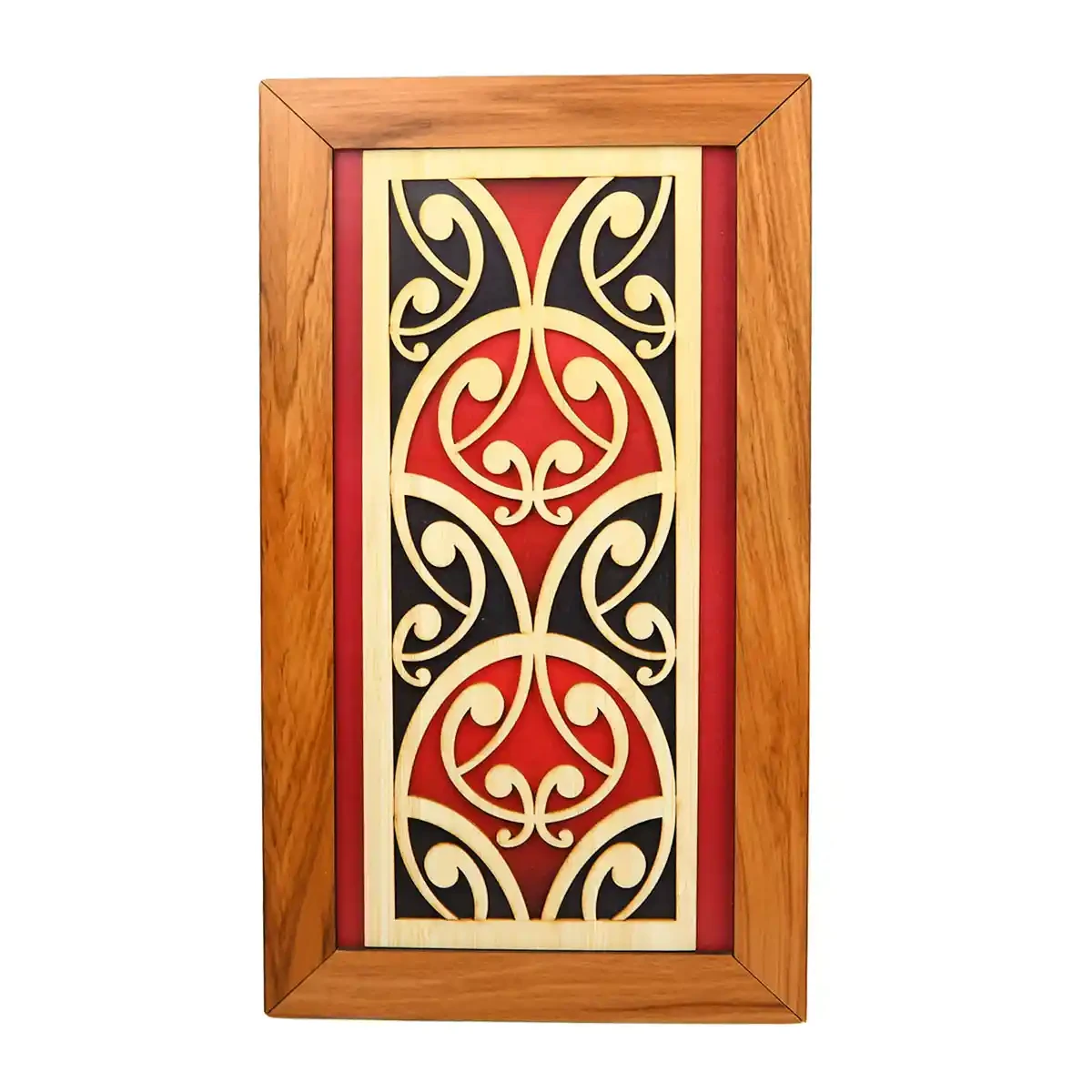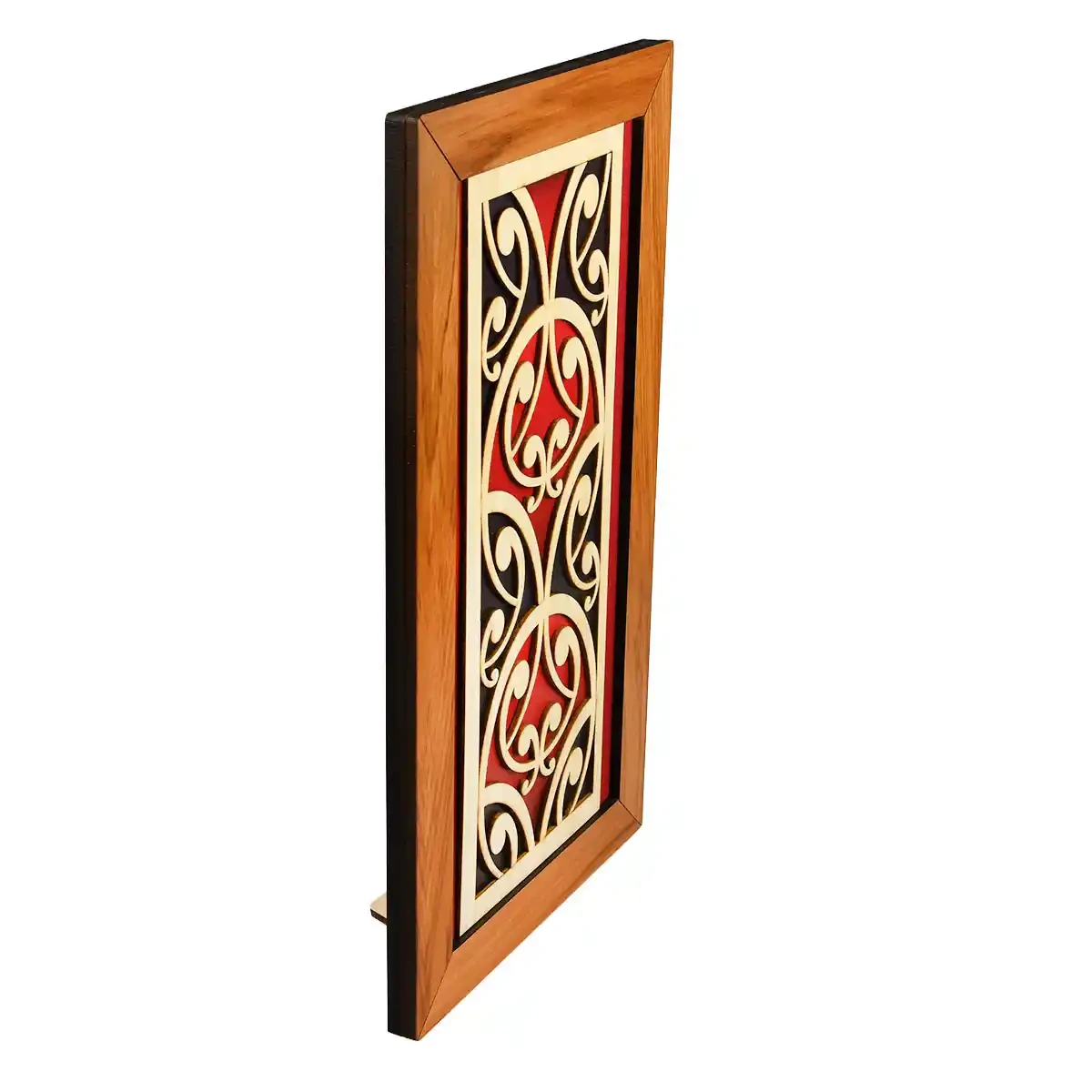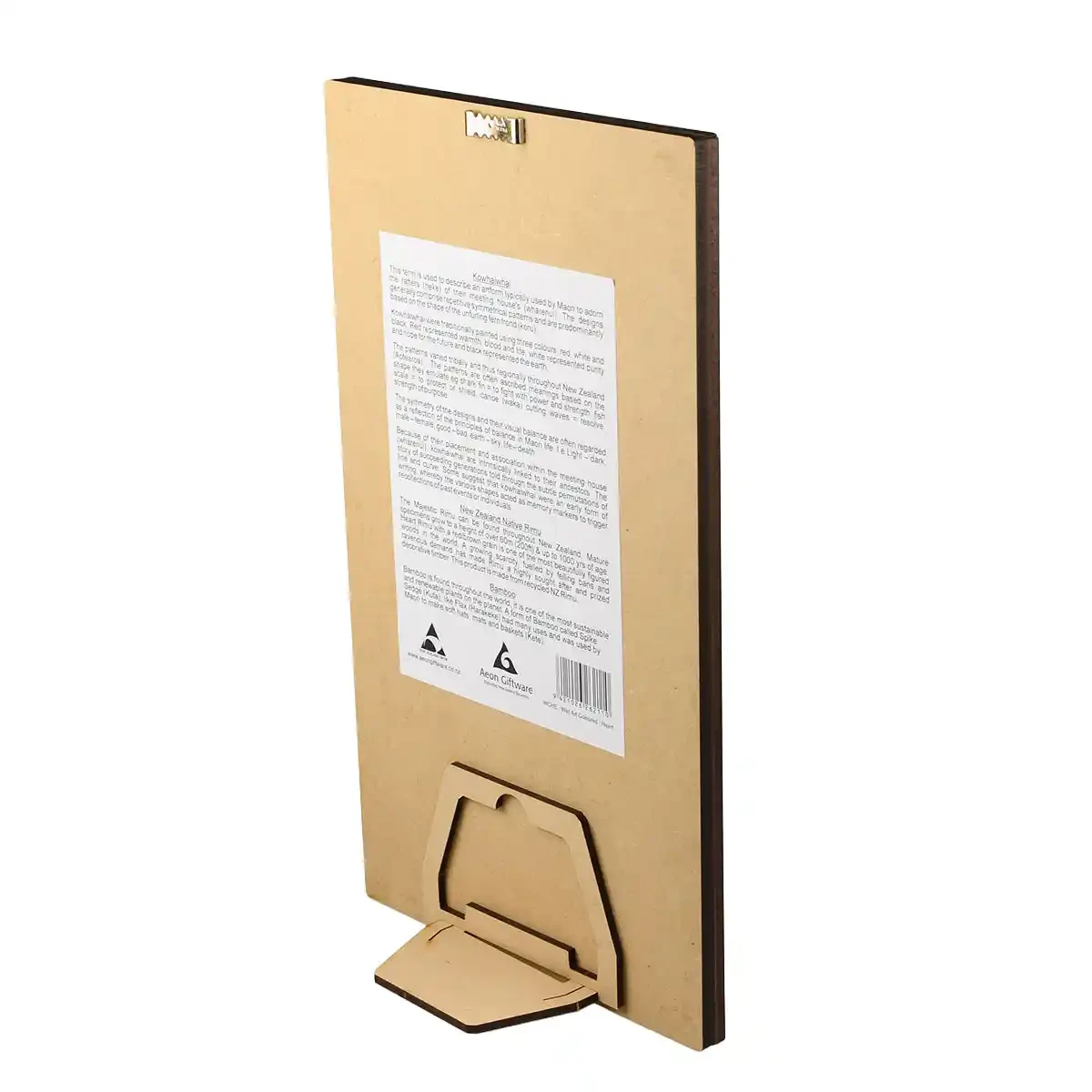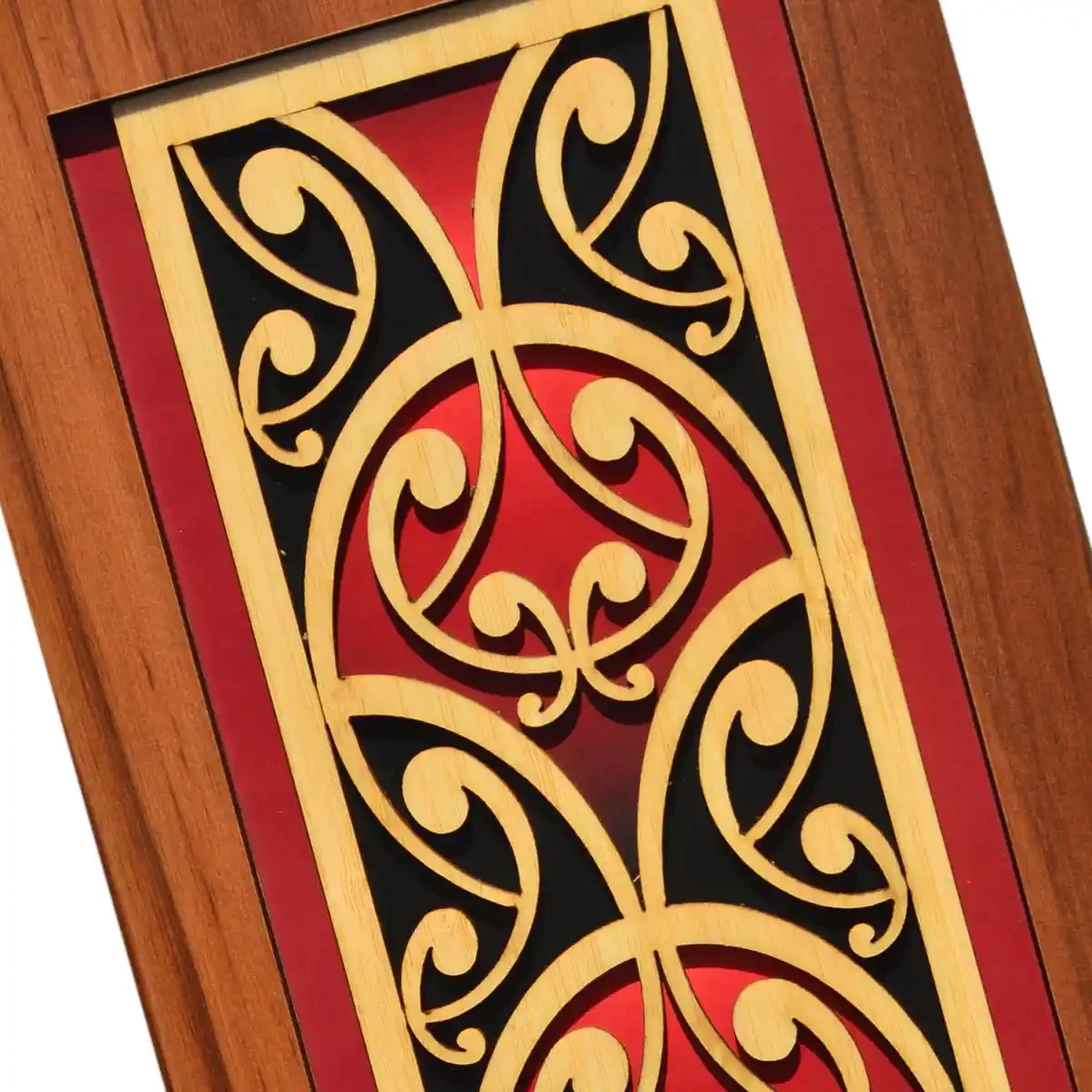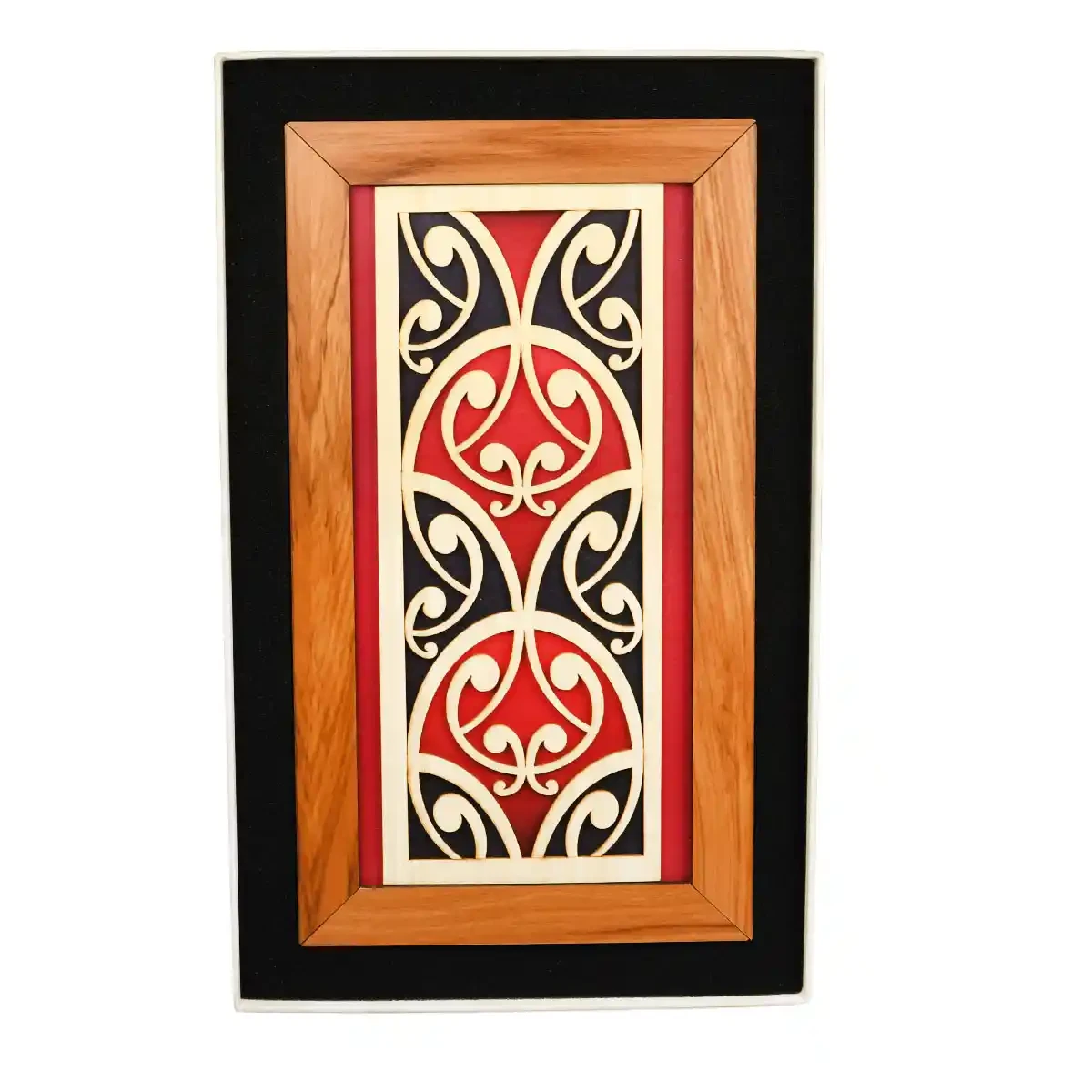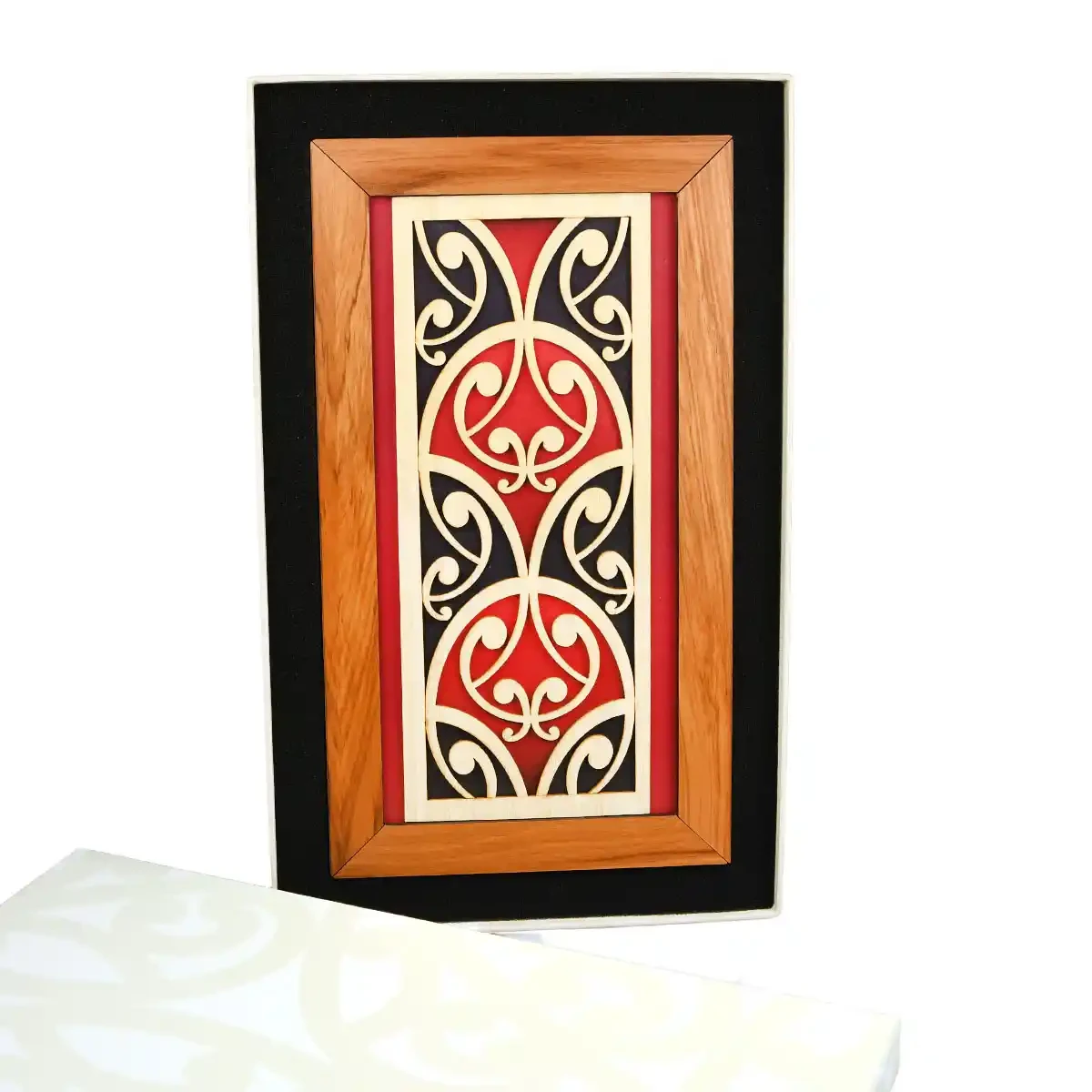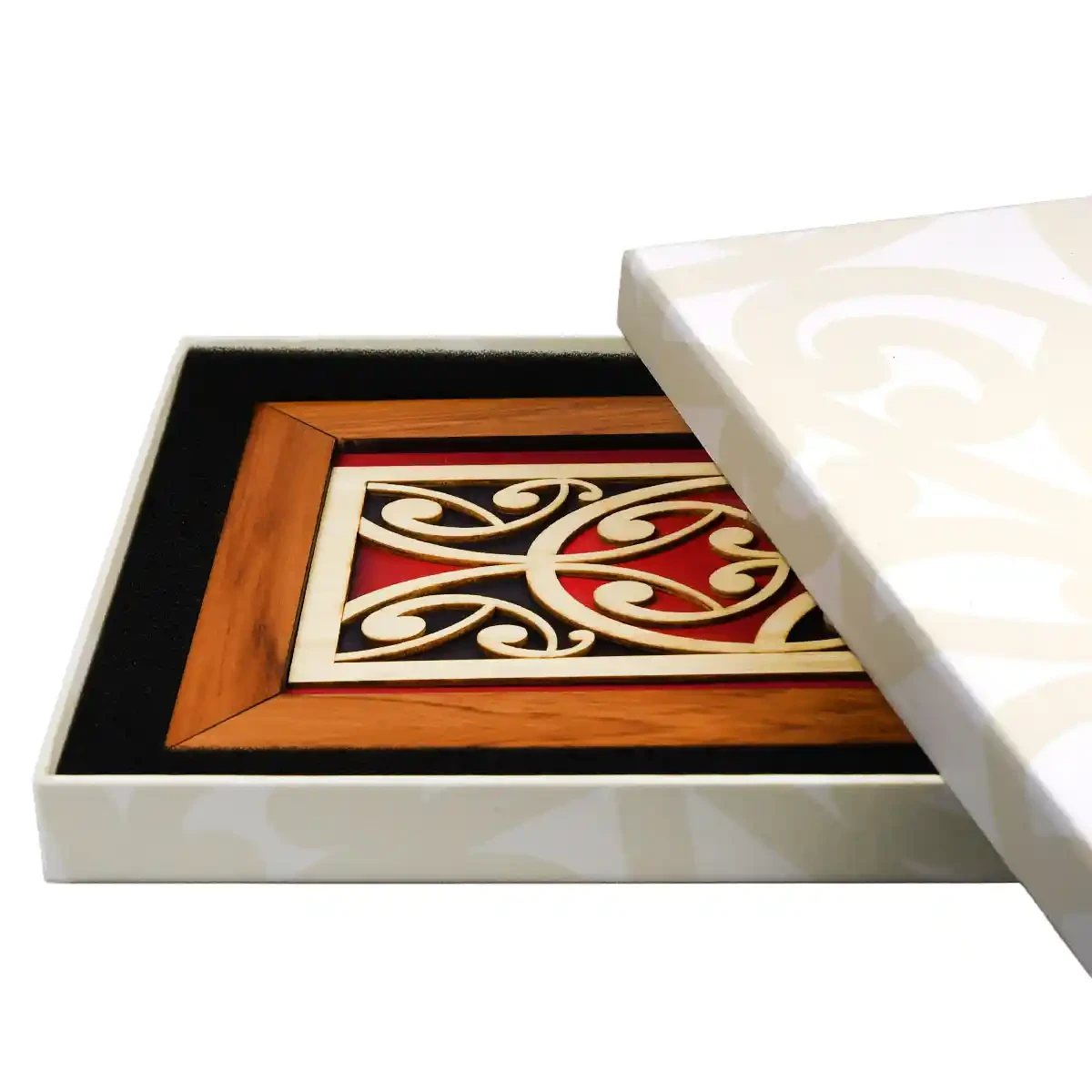Description:
Contemporary Māori wall art fishscale
Contemporary Māori wall art fishscale, crafted from rimu veneerboard, striking and beautifully simple wall art panels portraying Māori kowhaiwhai designs. We feature 'heart', 'scroll', 'fishscale' and 'rafter'.-
Size:170mmx300mmx10mm
(6.69"x11.81"x0.39')
- Comes with sturdy giftbox with koru design and protective foam
Kowhaiwhai
This term is used to describe an artform typically used by Māori to adorn the rafters (heke) of their meeting house's (wharenui). The
designs generally comprise repetitive symmetrical patterns and are predominantly based on the shape of the unfurling fern frond
(koru). Kowhaiwhai were traditionally painted using three colours; red, white and black. Red represented warmth, blood and life, white
represented purity and hope for the future and black represented the earth.
The patterns varied tribally and thus regionally throughout New Zealand (Aotearoa). The patterns are often ascribed meanings based on the shape they emulate eg shark fin = to fight with power and strength, fish scale = to protect or shield, canoe (waka) cutting waves = resolve, strength of purpose.
The symmetry of the designs and their visual balance are often regarded as a reflection of the principles of balance in Māori life. I.e Light – dark, male – female, good – bad, earth – sky, life – death.
Because of their placement and association within the meeting house (wharenui), kowhaiwhai are intrinsically linked to their ancestors. The story of succeeding generations told through the subtle permutations of line and curve. Some suggest that kowhaiwhai were an early form of writing, whereby the various shapes acted as memory markers to trigger recollections of past events or individuals.
This term is used to describe an artform typically used by Māori to adorn the rafters (heke) of their meeting house's (wharenui). The designs generally comprise repetitive symmetrical patterns and are predominantly based on the shape of the unfurling fern frond (koru).
Kowhaiwhai were traditionally painted using three colours; red, white and black. Red represented warmth, blood and life, white represented purity and hope for the future and black represented the earth.
The patterns varied tribally and thus regionally throughout New Zealand (Aotearoa). The patterns are often ascribed meanings based on the shape they emulate eg shark fin = to fight with power and strength, fish scale = to protect or shield, canoe (waka) cutting waves = resolve, strength of purpose.
The symmetry of the designs and their visual balance are often regarded as a reflection of the principles of balance in Māori life. I.e Light – dark, male – female, good – bad, earth – sky, life – death.
Because of their placement and association within the meeting house (wharenui), kowhaiwhai are intrinsically linked to their ancestors. The story of succeeding generations told through the subtle permutations of line and curve. Some suggest that kowhaiwhai were an early form of writing, whereby the various shapes acted as memory markers to trigger recollections of past events or individuals.
The patterns varied tribally and thus regionally throughout New Zealand (Aotearoa). The patterns are often ascribed meanings based on the shape they emulate eg shark fin = to fight with power and strength, fish scale = to protect or shield, canoe (waka) cutting waves = resolve, strength of purpose.
The symmetry of the designs and their visual balance are often regarded as a reflection of the principles of balance in Māori life. I.e Light – dark, male – female, good – bad, earth – sky, life – death.
Because of their placement and association within the meeting house (wharenui), kowhaiwhai are intrinsically linked to their ancestors. The story of succeeding generations told through the subtle permutations of line and curve. Some suggest that kowhaiwhai were an early form of writing, whereby the various shapes acted as memory markers to trigger recollections of past events or individuals.
This term is used to describe an artform typically used by Māori to adorn the rafters (heke) of their meeting house's (wharenui). The designs generally comprise repetitive symmetrical patterns and are predominantly based on the shape of the unfurling fern frond (koru).
Kowhaiwhai were traditionally painted using three colours; red, white and black. Red represented warmth, blood and life, white represented purity and hope for the future and black represented the earth.
The patterns varied tribally and thus regionally throughout New Zealand (Aotearoa). The patterns are often ascribed meanings based on the shape they emulate eg shark fin = to fight with power and strength, fish scale = to protect or shield, canoe (waka) cutting waves = resolve, strength of purpose.
The symmetry of the designs and their visual balance are often regarded as a reflection of the principles of balance in Māori life. I.e Light – dark, male – female, good – bad, earth – sky, life – death.
Because of their placement and association within the meeting house (wharenui), kowhaiwhai are intrinsically linked to their ancestors. The story of succeeding generations told through the subtle permutations of line and curve. Some suggest that kowhaiwhai were an early form of writing, whereby the various shapes acted as memory markers to trigger recollections of past events or individuals.

